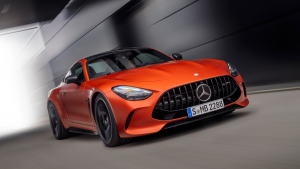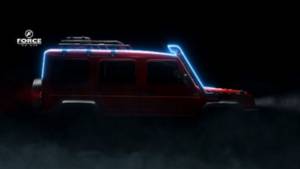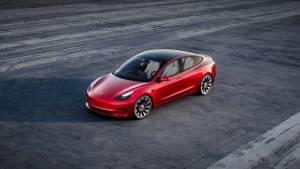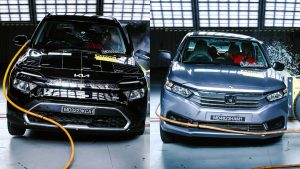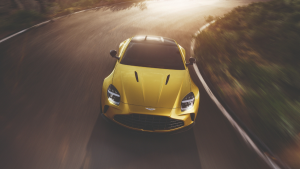Cats whispers
Team OD
Updated: July 25, 2013, 02:14 PM IST
I'm not an automotive romantic. I am sometimes amazed by what the forefathers of the automotive revolution achieved decades ago. But I am usually not the guy who has automotive museums on his tourism itineraries. I might still make the effort to marvel at old motorcycles, but as thankful as I am that all these people did all of those things, I'm strictly a modern car and bike person. I want my wheels to just roll. If I have to get greasy with it, then it's not my cup of tea.
And that brings me neatly to the all-British, Ian Callum-penned Jaguar XK. The name itself is a rather hallowed name at Jaguar. And it belongs to the XK120, one of the few vintage cars that has the power to stop me in my tracks. Jaguar cognoscenti may throw the D-Type, E-Type and so forth as the most iconic Jags to date. Call me a philistine and deride my sensibilities if you must, but the XK120 (and the XJ220 supercar) are the two Jags that would be on my list if I were to ever make a car-oriented scrapbook.
The XK120, built between 1948 and 1952, replaced another iconic Jaguar, the pre-war SS100. The 120 referred to its genuine - windshield removed - top speed of 120mph, or 193kmph. The XK was the new Jaguar engine that the showcar was supposed to showcase. The car proved so popular on debut that the company decided to put it into production. The first cars, all convertibles, featured aluminium panels on a ash (wood) frame, and later cars moved to steel for body parts to help with mass production - the boot lid, bonnet and doors remained aluminium. The XK engine displaced 3.4 litres making between 160 and 210PS from the DOHC inline six.
Performance was only one aspect of the XK120. It was offered as a convertible, a drop-head coupe and later as a full coupe. All three were marked by luxurious wood and leather interiors and still remain beautiful cars to look at vintage car shows around the world. It wasn't a decorative car either. It held numerous motorsport and endurance records, including being the fastest production car in the world at launch, and then in 1950, averaging 107.46mph or 172.94kmph over a 24-hour endurance run including fuel and tyre stops. The drivers at the wheel were Leslie Johnson, who owned this XK120 and Stirling Moss.
The XK engine would power Jaguars to five wins at Le Mans. It would power generations of the marque's luxury saloons. It would hold sway at Jaguar for four solid decades and then its name would live on to be resurrected by the XK8 showcar that would become the first of Jaguar's modern V8-powered sports GTs, the X100-generation XK. The supercharged XKR would come later and a full decade later, in 2006, we would get the X150, the all-new XK that you see on these pages. The XK engine was also the first engine to be developed in-house for the brand - William Lyons had adapted other manufacturers' engines for the SS-series cars before the war. But all that is history.
Today I'm piloting an aluminium GT boasting the latest AJ-V8 engine in its naturally aspirated guise and that legendary name. The mountains around Bologna in Italy form a jagged - if slightly chilly - backdrop to my driving day and while I should probably be jealous of Bert, who's hogging the road ahead clad in an impossibly scarlet Ferrari 458 Italia, I'm not. You see, the Jaguar is a supremely comfortable way to do the sports car. And on these tight windy two-lane roads, all the horsepower in the world, all of the world's top suspension bits, carbon fibre seats and every epic electronic aid isn't going to make you go faster. So you might as well chill out.
This the Jaguar does with remarkable style. The car is internally referred to as the X150, which replaced the original (modern XK) X100 in 2006. The X100, in turn, came out in 1996 replacing the XJS - which like both the generations, came in a coupe and convertible versions. The X150 version retained the overall ethos of the X100, but as Ray noted from the launch in Cape Town a few years ago, the new car's similarity in design was a bit misleading. What the new car was, in fact, was a bonded aluminium beast that was 300kg lighter than the Mercedes SL500 - it's benchmark - and offered unprecedented composure, agility and appeal. This was the new pinnacle of GT-dom a la Jaguar.
And the GT, or Grand Tourer, is the right car for this road. This is Italy so the roads aren't as perfect as the German equivalents. Which is no hassle in the Jaguar - it absorbs bumps and undulations - and gives you the well-damped, sporty-stiff feel that marks it out as a sporting automobile. Where the Ferrari bobs up and down over the undulations, the Jaguar just glides.

It's a plush, quiet cabin swathed in leather with metal accents setting off the interior throughout. The Jaguar drive selector is present and it's a cool take on the shift lever. That said, it takes me some time to learn to turn the knob to Drive rather than Sport without looking down to reconfirm. And from that point on, it's just you and the steering wheel handling vector roles.
But the rest of it is that engine. It's delightful. I'm guessing the supercharged version in the XKR is even more enjoyable, but this one is no slouch either. The third generation AJ-V8 displaces 5000cc exactly and makes a not inconsiderable 385PS at 6500rpm along with a heady 515Nm at 3500rpm. Lash out at the throttle and the six-speed automatic transmission responds pretty quick. The V8 has a nicely muted roar to it, but you have to really push the car to hear it sing at revs - at street speeds it's a civil, refined beast. You're always aware that there's a beast lurking within, but also that it's civil and courteous unless provoked. Every time Bert disappears in a sequence of corners, I get the chance to floor the throttle, point the sharp nose into corner after corner and arrive on his tail with a purring V8 and a shiny, chrome grille which I would like to believe completely fills up the Ferrari's tiny rear-view mirrors.
And despite its GT aspirations, the XK does turn plenty quick. The steering is weighted rather well and despite the 1660kg weight, it's far from unwieldy even in rapid direction changes. The sort of playground where a rock-hard honed-to-a-scalpel sharp Ferrari is nigh uncatchable. During the photography session, I do take the Ferrari out for a spin and come away duly impressed. But it reinforces the Jaguar's highlights for me as well.
When it's time to head back - cue more corner carving, more bazzing down the lightly policed Italian auto route, the Jaguar is my natural pick. Turn up the stereo, listen to the crisp British girl-voice from the navigation and now and then, hear the distant thunder of that slick V8 whenever the opportunity arises. This is beautiful. This is how comfortable, long-distance, sporty-flavoured motoring is supposed to feel.
The beauty of the Jaguar goes further. It's a luxurious, dramatic, well made car that I can see working really, really well in India. The XKR - the supercharged version - is already available here and while we haven't driven it around at home, I am convinced that it would work. Just imagine it. You and the significant other, ensconced in comfort, soothed by that distinctive burble, buzzing along on a glorious mountain road in the foothills of the Himalayas or the verdant greens of the Malabar coast. It's enough to turn you into an automotive romantic.

Price (Ex-Delhi)
-NA-
-NA-
Displacement
5000cc
5000cc
Transmission
Automatic
Automatic
Max Power(ps)
-NA-
-NA-
Max Torque(Nm)
625
625
Mileage
-NA-
-NA-
Related Stories
Advertisement
Advertisement
Top Stories
Advertisement
Latest Videos
Most Popular
- Budget Sportbike Showdown: Kawasaki Ninja 500 vs Aprilia RS 457 vs Yamaha YZF-R3
- Mumbai-Pune Expressway speed restrictions updated
- Upcoming Mahindra XUV 3XO: All you need to know
- 2014 Triumph Daytona 675 vs 2024 Kawasaki ZX6R - A Decade of Evolution in Supersport Motorcycles
- 2024 Hyundai Creta vs Toyota Urban Cruiser Hyryder vs Skoda Kushaq comparison review - the hype is real?
Advertisement
1
2
1
2
Network18 Updates
Compare

